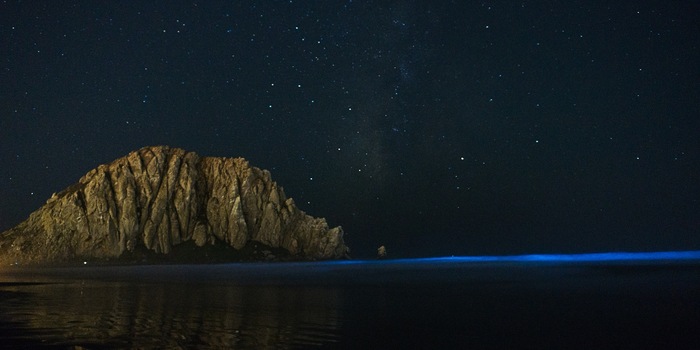
Star disappeared
A star of enormous luminosity seemed to be heading for its end as a supernova. When astronomers looked at it again, they realised that it had simply disappeared.
When they reach a stage known as a luminous blue variable (LBV), their end as a supernova is usually imminent. The stars then hurl parts of their mass into space in a massive eruption, leaving behind a black hole. However, when astronomers led by Andrew Allan from Trinity College in Dublin wanted to observe such a star more closely, they were astonished to discover that the star, which was still highly visible in 2011 due to its luminosity of two and a half million suns, had disappeared.
At a distance of around 75 million light years, the star, which is located in the Kinman dwarf galaxy, cannot be observed directly. However, the spectrum of the galaxy reveals that it must contain a star of this type. At least that was the case between 2001 and 2011. As Allan and colleagues now write in the "Monthly Notices of the Royal Astronomical Society" https://academic.oup.com/mnras/article-lookup/doi/10.1093/mnras/staa1629, the characteristic trace is now missing from the galaxy's spectrum.
What has happened? The researchers are considering two possible explanations. Firstly, the star could be surrounded by a dense cloud of dust that is shielding its light in such a way that their observation instrument on the ESO's Very Large Telescope on Cerro Paranal in Chile was no longer able to pick it up. Secondly, the star could have collapsed directly into a black hole without a supernova - at least without an observable supernova. This would be a novel phenomenon, especially as astronomers had previously assumed that the supernova of an LBV would be particularly violent. Instead, "we may have observed one of the most massive stars in the local universe gently breathing its last," says Allan's colleague, Jose Groh, who is also a researcher at Trinity College, in a press release from ESO.
Spectrum of Science
We are a partner of Spektrum der Wissenschaft and want to make well-founded information more accessible to you. Follow Spektrum der Wissenschaft if you like the articles.
[[small:]]
Experts from science and research report on the latest findings in their fields – competent, authentic and comprehensible.